Halle…Indeed, A Miracle
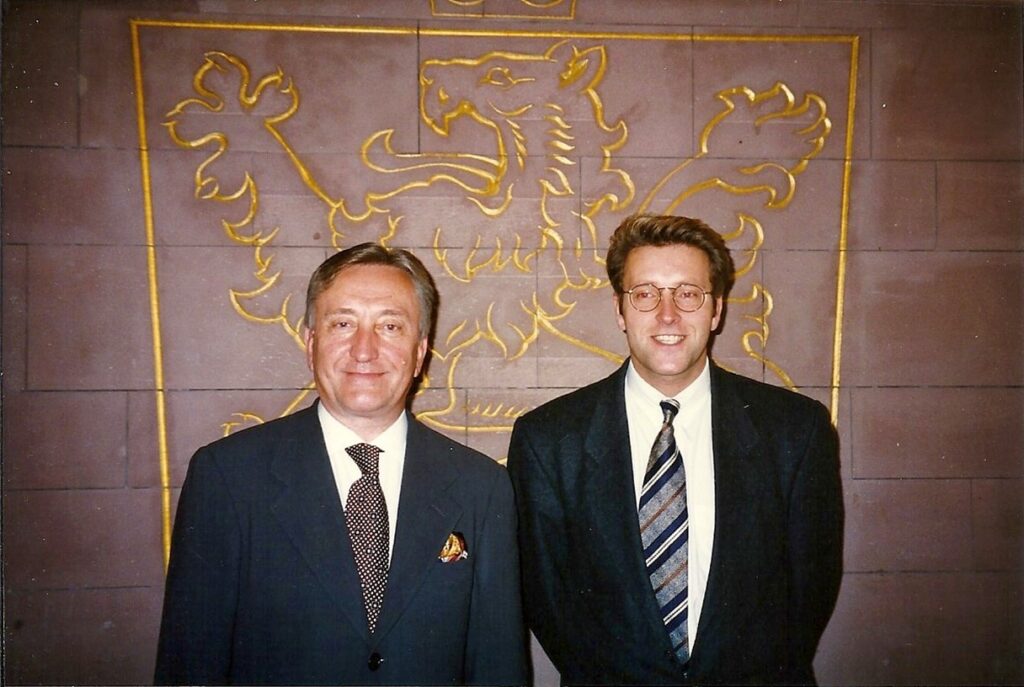
When I learned that Gerry (actually, Gerhard) and his son Ralf, Weber were going to make a presentation at the 1992 ATP World Championships at the Festhalle in Frankfurt, my curiosity was thoroughly piqued. I wanted to hear about the German grass court tournament that they were launching in the spring of 1993, (in those days), the week following Roland Garros. Sandwiching the presentation, as a break between the round-robin matches scheduled that day, was an ideal way to call attention to a new event particularly since Germany was not known as the home of “Lawn Tennis.”
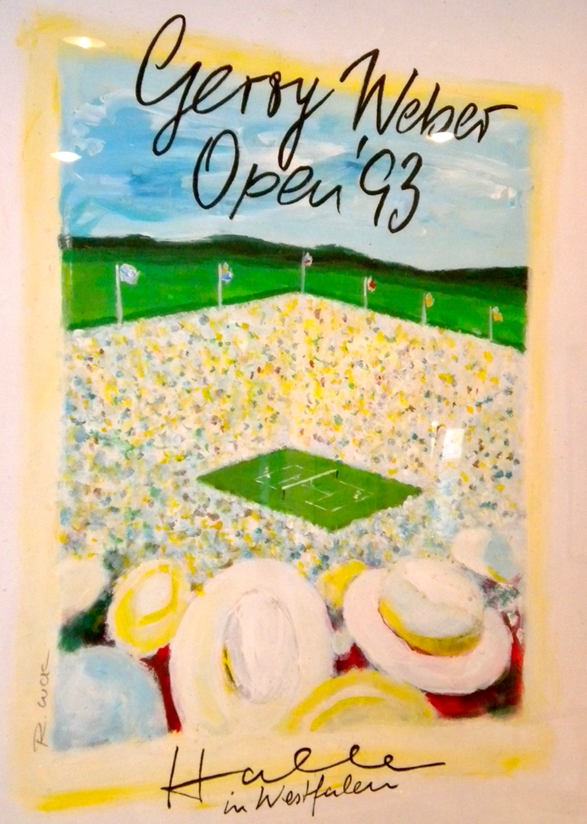
That afternoon, Gerry Weber, looking very dapper, (almost like the president of a successful small-town bank), detailed his plans (through a translator) concerning staging a tournament in Halle (North Rhine-Westphalia) the same week that the revered Queen’s Club Championships would be taking place in London. The more he discussed the event he was founding it became clear that beneath his tranquil demeanor lurked an individual who was quite audacious. As things turned out, he lived up to the impression…proving to be very bold and adventurous. He would have to be, to invest in what amounted to be a scheduling face-off with the long-established Wimbledon warm-up that had begun in 1890.
Naturally, pundits were skeptical about the adventure’s possible success since the extent of the Webers tennis experience was organizing a $25,000 ATP clay court Challenger at the Tennis Club Blau–Weiß in Halle.
The fact that little was known about the tournament owner and even less about the city where the event would take place added to the doubt. As it turned out, Weber had been born in Halle. His mother operated a small shop in town that sold a variety of products including clothing. As a youngster, the time he spent working there sparked an interest in retail and fashion. The interest led him to become involved in the clothing business in 1965. By the early 1970s, he and childhood friend, Udo Hardieck had established a women’s fashion company and a manufacturing complex that was based in Halle. At its peak, the brand featured five stylish clothing lines, (in affordable price ranges). The chic creations were sold at Gerry Weber retail outlets around the world.
Before the tournament’s location became celebrated, there were anecdotes about players going to the wrong Halle. The reason was simple…Three cities in Germany shared the name. Some competitors thought the one near Dresden was the tournament site. A few believed that it was the coastal resort city. Eventually it became evident that Gerry Weber’s Halle was the town of 20,000 in the countryside of an agricultural region, a short distance from a “Teutoburger Wald”, (a nature preserve), a half an hour drive from the city of Bielefeld where there were more than 330,000 residents and a major university, to boot.
Weber had a “quiet but an always ‘there’ presence”. Hardieck, initially the tournament’s Technical Director before becoming an advisor a position he held until his death in 2018, was not comfortable being in the spotlight. Robert Lubenoff, the acclaimed tennis media advisor, who worked with the pair, said, “He was the soul of the tournament. Gerry was the guy with the vision and the energy. Udo was the one who was the architect, the one who saw that everything was in its proper place. They were the perfect couple.”
Weber was innately savvy. He had remarkable “Situational Feel…” That was the only way to explain why he signed seventeen-year-old Stefanie Graf to be a Gerry Weber brand ambassador in 1986.
In 2010, Weber again showcased his “Smart Risk” management style by negotiating a lifetime tournament contract with Roger Federer. The Swiss star, who was ranked No. 1 at the time, admitted that it felt a bit like he was getting married…(which he actually did in April 2009 to Miroslava “Mirka” Varinec) Then he added that playing the Gerry Weber Open, gave him “…momentum (before) going into Wimbledon” … The comment was one of his “All-Time Understatements…” since he won the Halle singles title a record-setting ten times then went on to earn one of his eight Gentlemen’s singles at the All England Lawn Tennis Club (AELTC) after 2003, ’04, ’05, 06 and ’17 triumphs in Germany.
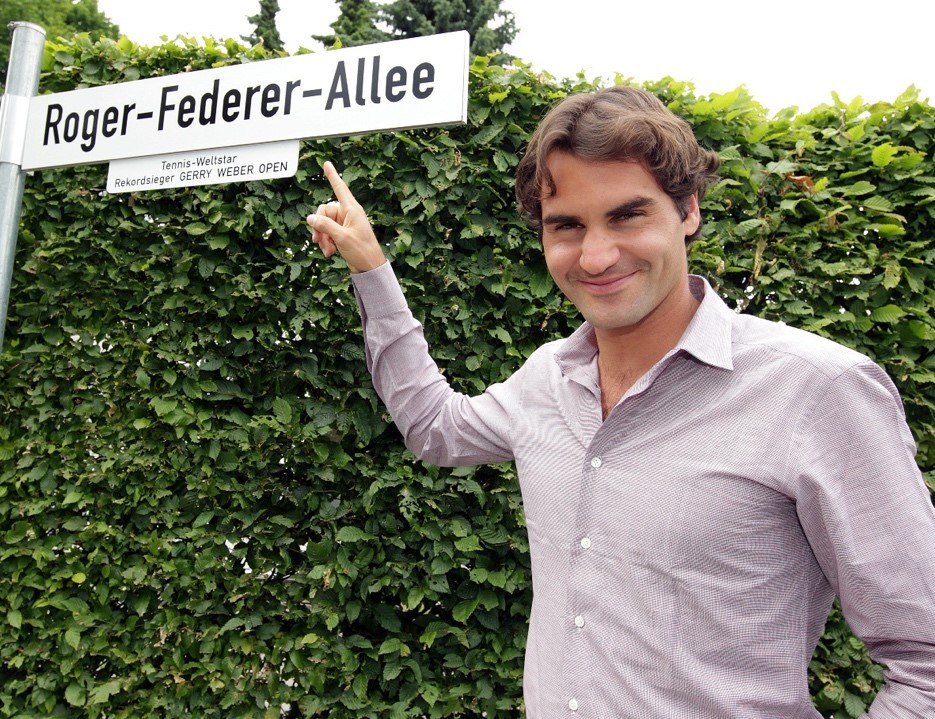
Throughout his career, Federer “Doubled” being a one-of-kind player and an extraordinary individual beyond the court. In 2012, a street in Halle was named for him which made him even more aware of his local importance.
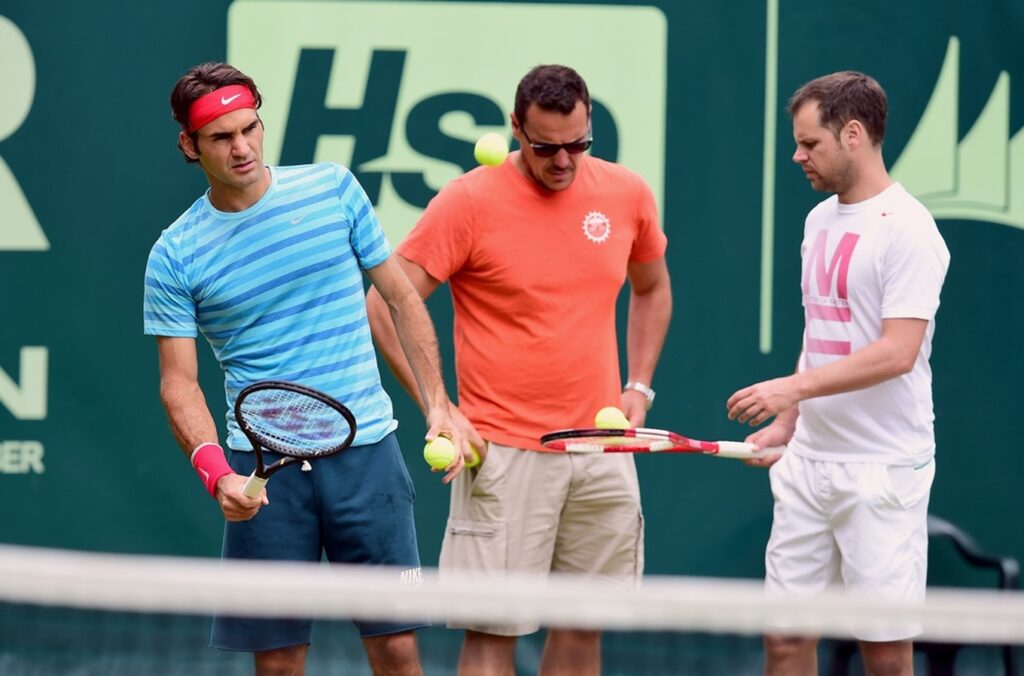
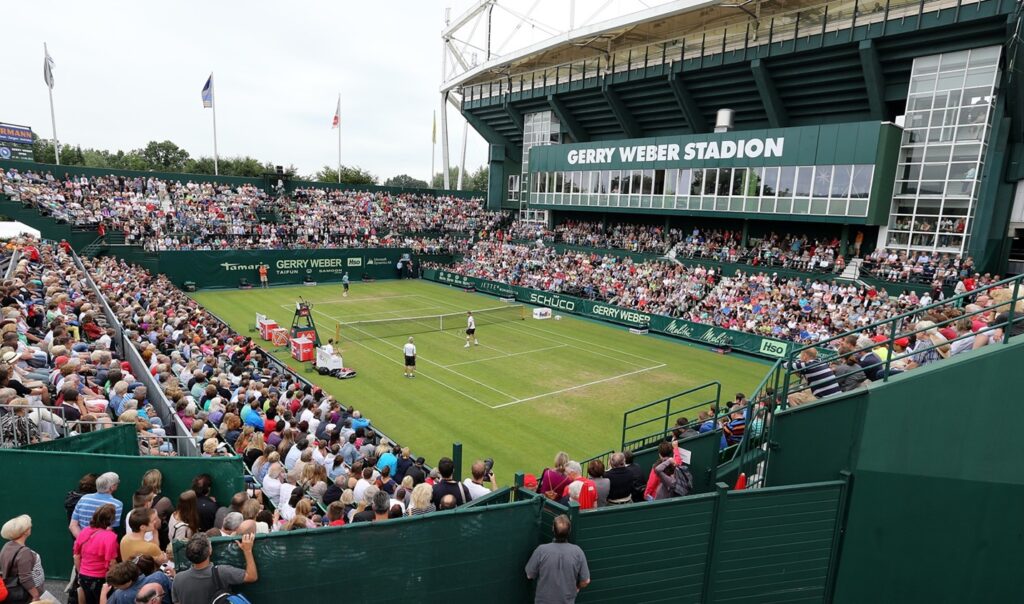
An example of his “living the understanding…” occurred in 2014. After he and Marco Chiudinelli, his Basel friend, received a walkover in their doubles match from Martin Emmrich of Germany and Andreas Seppi of Italy (who was ill), Federer was… Federer. Realizing that it was “Ladies Day”, and the fans were anxious to see him play, he suggested to tournament officials that he hold a public training session with Chiudinelli…Stating the obvious, every one of the 4,500 seats on Court I was filled for the entertaining “workout…”
(This year, on June 21st, the tournament held “Roger Federer Day”. The “Thank You” recognized the performer who played the event 18 times and compiled a staggering 69-8 career record.)
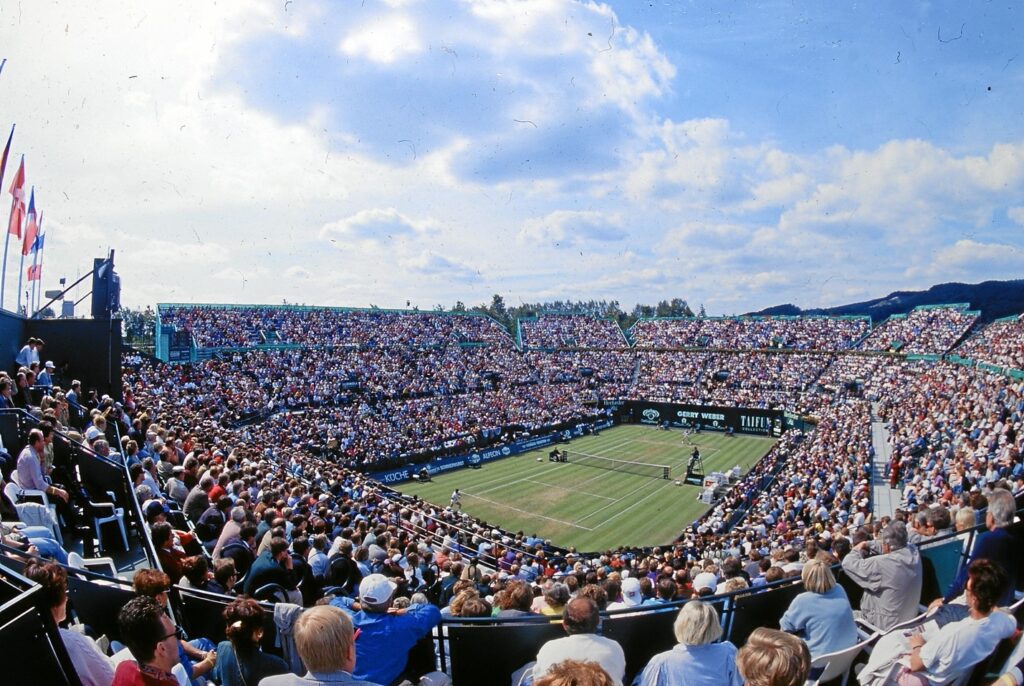
During the spring, the weather in Europe varies dramatically. Rain is regularly a companion of the season. In its first year, the tournament was nearly washed away…though Henri Leconte, the miraculously skilled and equally erratic Frenchman, outlasted the week’s downpours and defeated Andrei Medvedev, the Ukrainian-Russian, 6-2, 6-3 in the inaugural Men’s Singles final…For a number of those on hand, the regular dashes to cover were better remembered than the level of play.
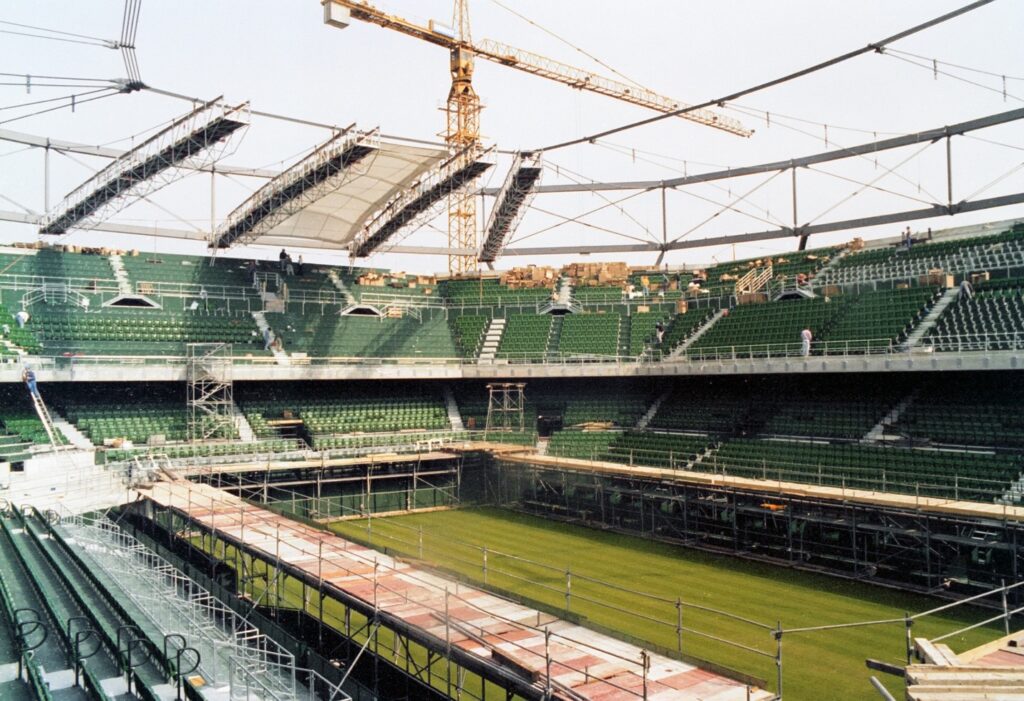
Fortunately, Weber’s creativity went well beyond fashion design and color combinations. He commissioned an architect to design a retractable roof to cover the 12,300 seats in the Gerry Weber Stadion. By 1994, it was operational, and the championship became the first tennis event to be able to avoid Mother Nature’s spring crying jags.
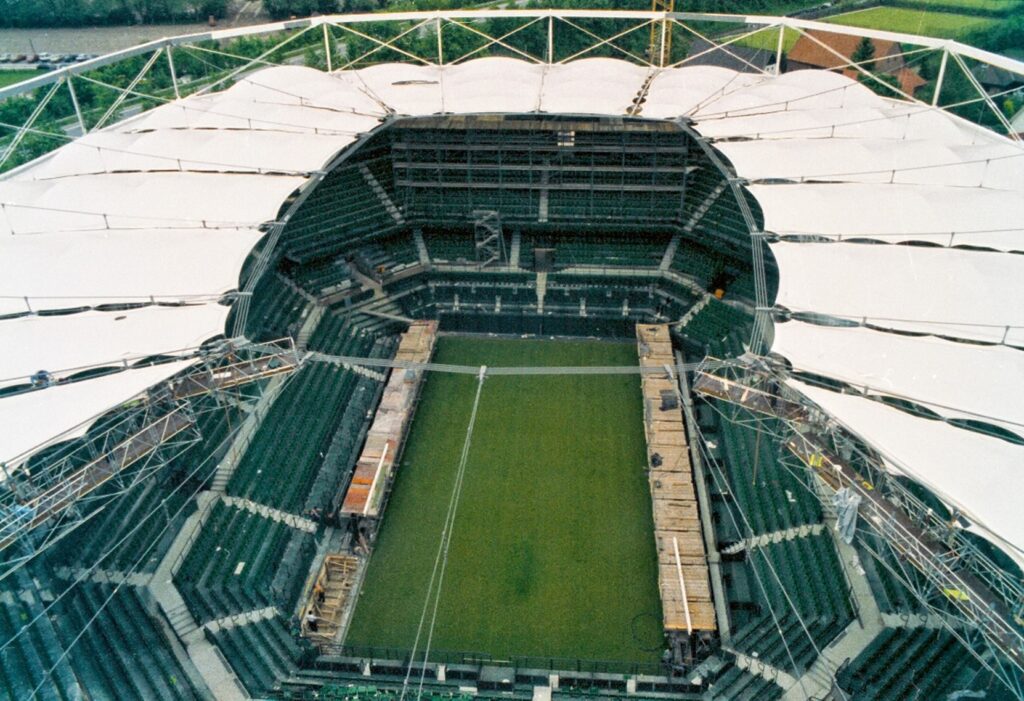
In the movie “Field of Dreams”, Kevin Costner’s character had a vision and tried to live it. Playing the tournament, the year it was first “roofed”, Jim Courier admitted, “A stadium like this in this area reminds me of the movie with Kevin Costner, ‘Field of Dreams’”.
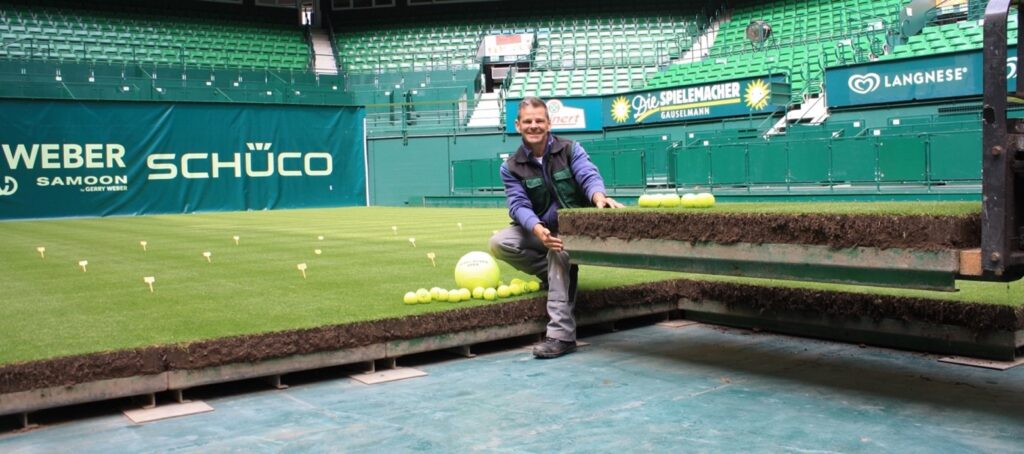
In one sense, the roof was a practical necessity. In another it could have been a catastrophe. Playing tennis in an occasionally closed arena did not offer the ideal conditions for keeping a grass court up to elite competitive standards.
Weber, a thoughtful problem solver, handled the maintenance dilemma by recruiting Phil Thorn. Thorn had worked with his father Jim, who had been responsible for the courts at the AELTC. Young Thorn, who oversaw the care of the grounds at Halle from the start, developed a revolutionary idea. With Weber’s support, he grew grass for the center court on palettes behind the outside courts, four hundred of which were carefully moved into the arena prior to the start of competition each year.
Thorn’s overall responsibilities included managing a crew of roughly ten individuals before the tournament began; (The group expanded to forty-five during the competition.); maintaining the elegant AELTC-like dark green and purple color landscaping, along with the facility’s nursery thriving appearance that became the Halle standard.
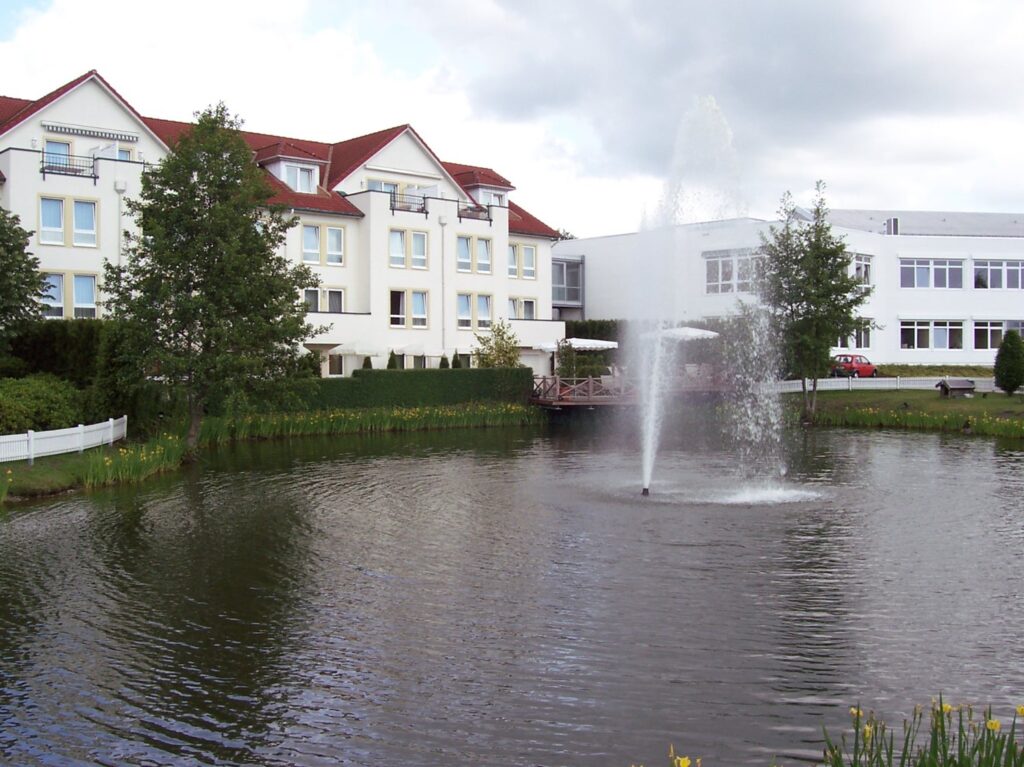
The state-of-the-art Sportpark Hotel/multi-purpose complex, a short walk from center court, is another aspect of Halle’s uniqueness.
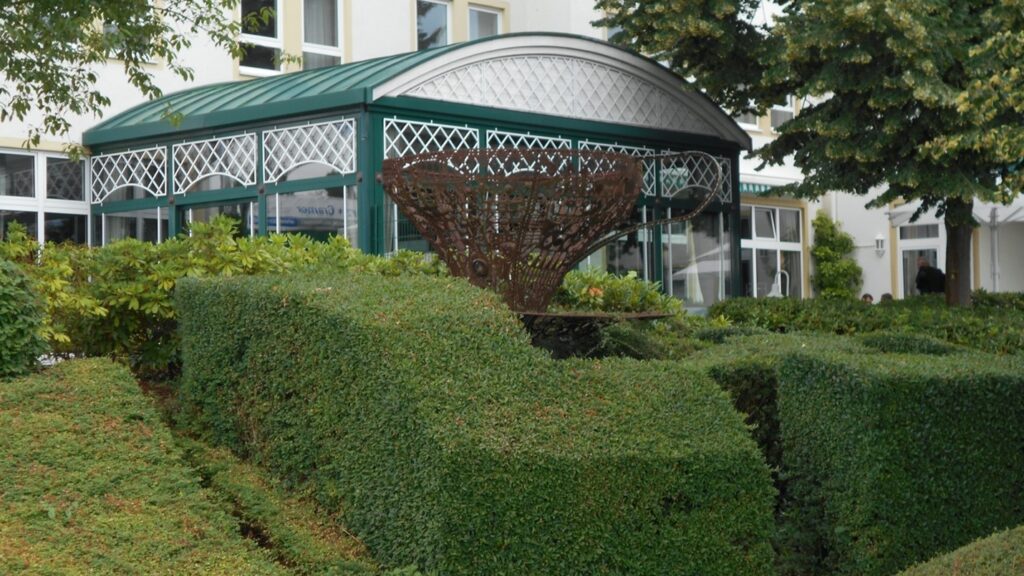
The setting is resort lush and the amenities offered cater to an array of players needs whether it is gourmet dining or creating a caring environment for every competitor who stays there. In addition, there are covered practice courts near the hotel.
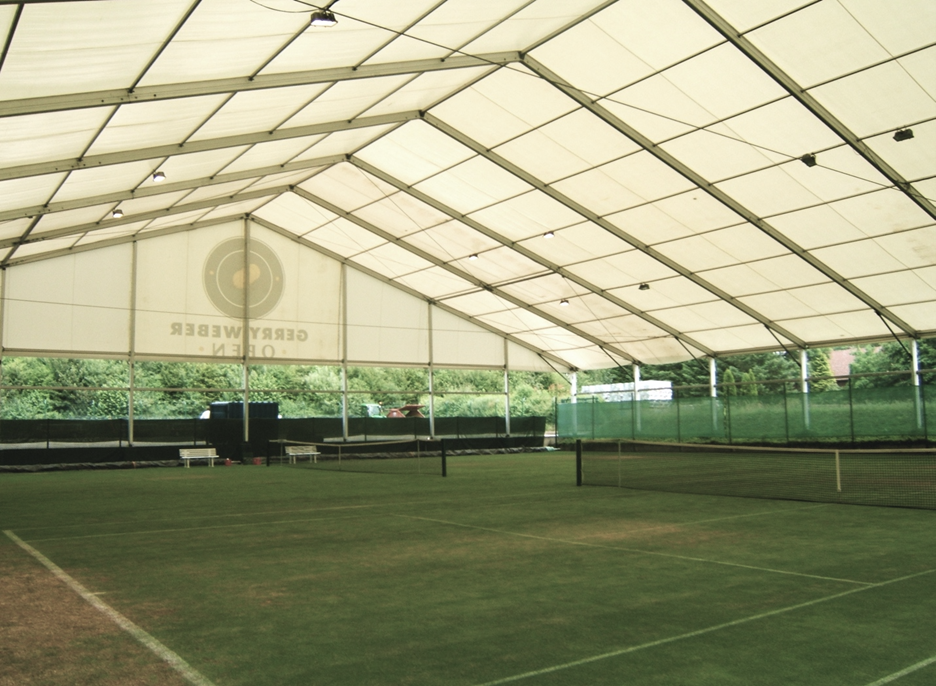
From the outset, Ralf Weber has served as Tournament Director. But more important, he has been the individual the tennis public knew as face of the event, the frontman responsible for ensuring that the Gerry Weber Open…remained the Gerry Weber Open. His educational training was in the field of economics but his “hands on…” involvement provided a PhD in tournament management. The experience-based degree solidified the foundation created by the success enjoyed as an ATP 250 Series event and led to Halle earning 500 Series status, (as did Queen’s), in 2015.
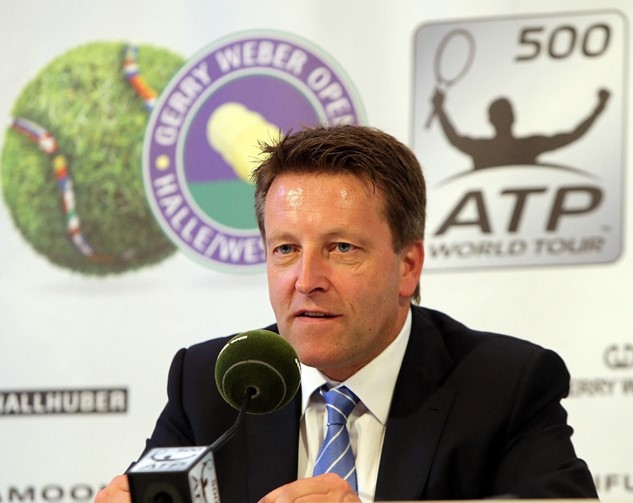
Weber devised and annually improved “Tennistainment”, a concept designed to mix daily tennis matches with a variety of evening entertainment activities following play. The combination created a festive atmosphere, supported by booths offering food and drink that surrounded the stage which is situated behind center court. As a result, attending Halle became a “Must Do…” on June tennis-social calendars.
Now make no mistake there have been challenges. Gerry Weber AG was the tournament sponsor until 2018. When a cashflow speed bump was hit, German health care provider Noventi came to the rescue serving as the title sponsor from 2019 until ‘21. For the past two years, Terra Wortmann AG, whose Terra products make it one of the biggest independent computer manufacturers in Europe, has been the tournament patron.
Gerry (Gerhard) Weber, whose health had been declining, passed away on September 24, 2020. Halle was part of his DNA. Born and reared there, it was home to his factory and corporate headquarters. His company employed thousands of people from the city and the surrounding area. He cared about the community… He was one of them.
In Martin Fröhlich’s Halle Kreisblatt newspaper story titled, “On the death of Gerhard Weber: Someone who shaped the region”, he wrote, “Even today some people think he was called Gerry Weber. He used to say, ‘No, that is the company. I’m Gerhard’.”
His “I am one of you…” attitude is the reason Halle became the “Peoples Tournament…” (The tennis version of the African proverb, “It takes a village to raise a child”.) “It is theirs…” and the primary reason the community is the backbone of the tournament’s staffing. Annually, people saved their vacation time and used it to work at the event. They make the commitment because Weber was committed to his hometown.
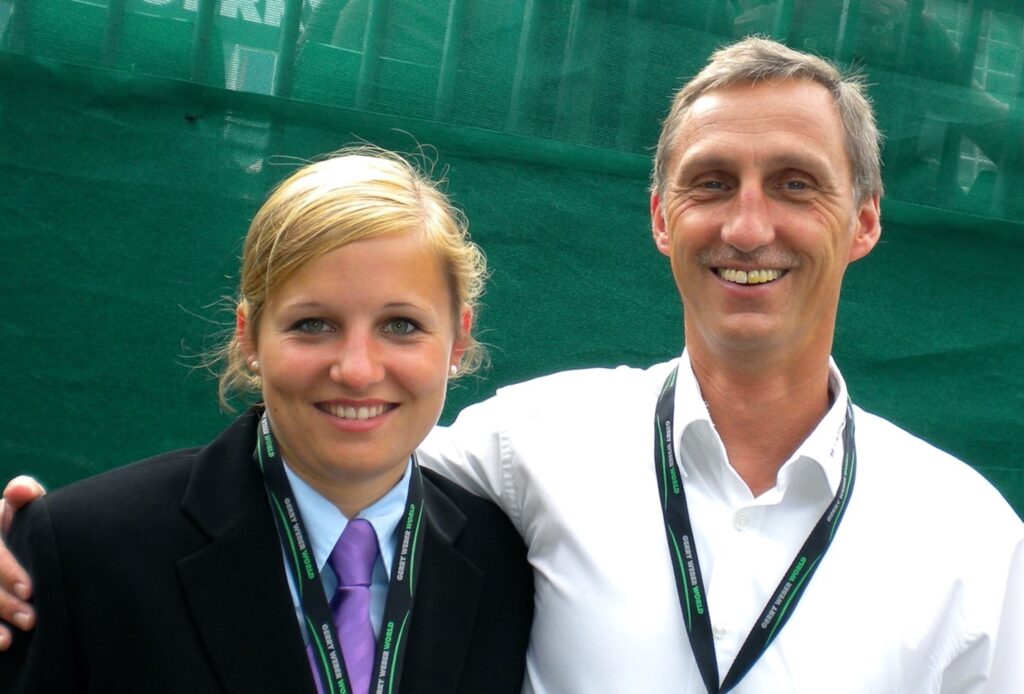
Several years ago, Kim Kupczyk explained the phenomena. “My first memory is working as a ball kid as a nine-year old,” she said. “Then I began to serve as a line umpire. Now I am also part of the Driving Service.”
Her father Fred, a member of the Driving Service since the tournament’s inception, had become one of the four “Chiefs” coordinating player, coach, umpire/lines people and VIP transportation during the competition. Twelve hours days were typical for Kim, who when asked about surviving the grueling schedule, grinned and said, “I’m full of energy this week.” Since her mother Jutta, along with her younger sister Lynn and younger brother Kevin were also working, she pointed out, “We have a family meeting for the whole week.” She continued, “My dad is a school administrator and takes a work vacation so he can be here. My mother, who is also a ‘Chief’ works at her real job as an X-Ray technician at a hospital and is also able to organize work shifts, for those at the hospital, who also work at the tournament.”
For the Kupczyks and so many others, the reason for the devotion was obvious. “The tournament represents the area,” Kim explained. “If you mention Halle, people know it. It’s an economic success and the tournament has played a role. If you go to the city and see friends, you will probably see them here. Halle is famous, but it’s familiar.”
This year, the tournament celebrated its 30th Anniversary. When it began, the guidance provided by Gerry Weber was pure and utter genius. Thanks to his foresight, along with Ralf’s, combined with the unwavering support of the people from Halle, the championship has become legendary…not only in Europe but throughout the tennis world.
Twenty years ago, Zeljko Franulovic, ATP Tour Vice-President Europe, admitted, “You have to ask, how can you have a top grass court tournament in Germany? How do you do it in a small city? It would make sense if it was in a city like Frankfurt. The Gerry Weber Open is a special event. It attracts players. They like to go there. There is a hotel on site and plenty of practice courts. I have come to the conclusion, what the Webers have done is a miracle.”
I attended the tournament from 1993 until 2019. During that time, I had an opportunity to “Live” the Halle experience… and after more than 50 years as a tennis journalist, it is one of my most memorable…
It is “Indeed, A Miracle…”
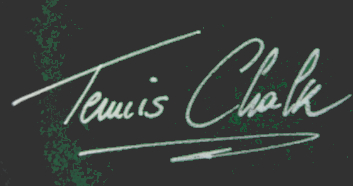
Very enjoyable article and an interesting insight of the Halle tournament.The grass pallette passage gave me an answer since I had always wondered how could the green survive in the perpetual half shade of Halle’s center court…